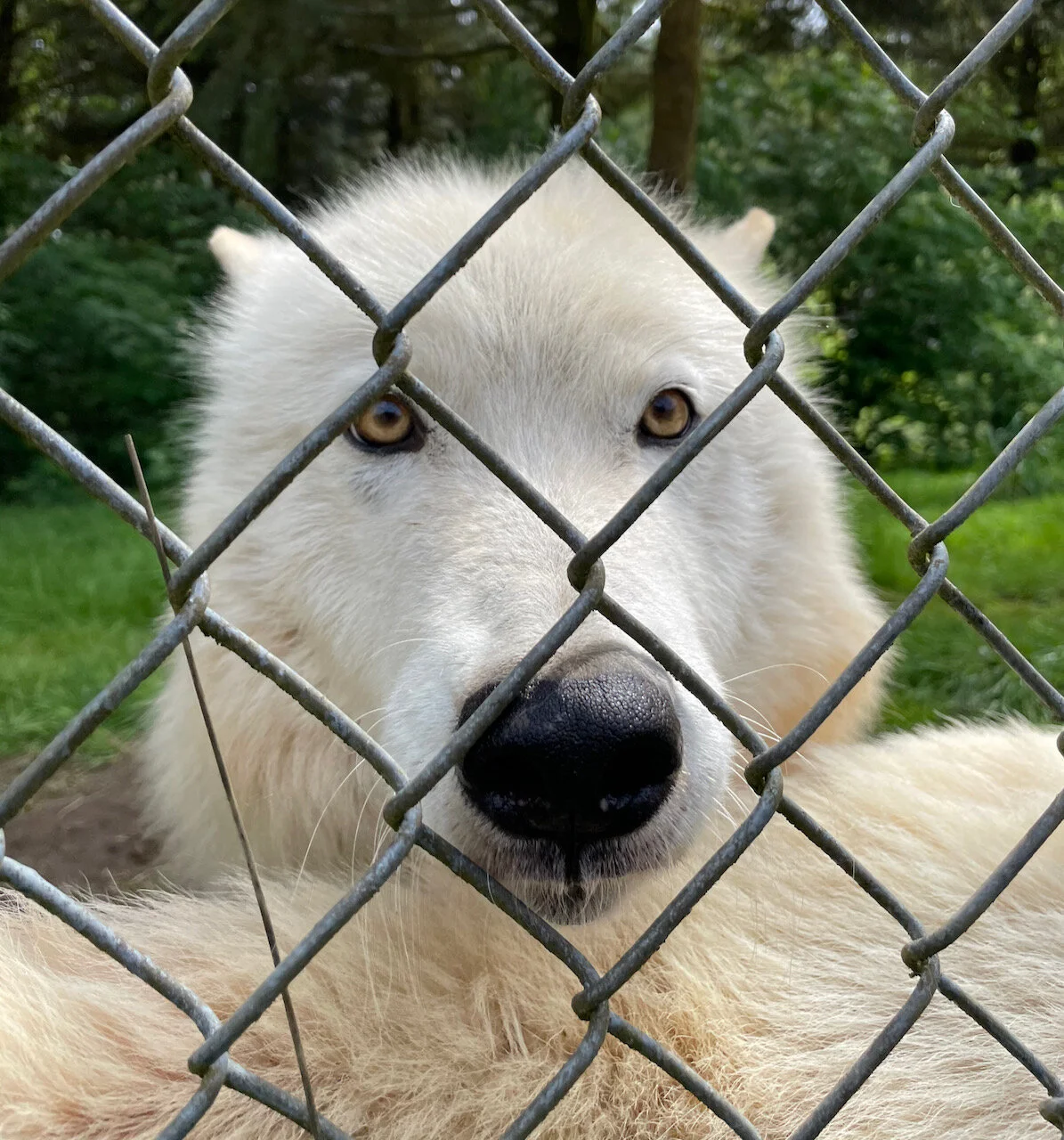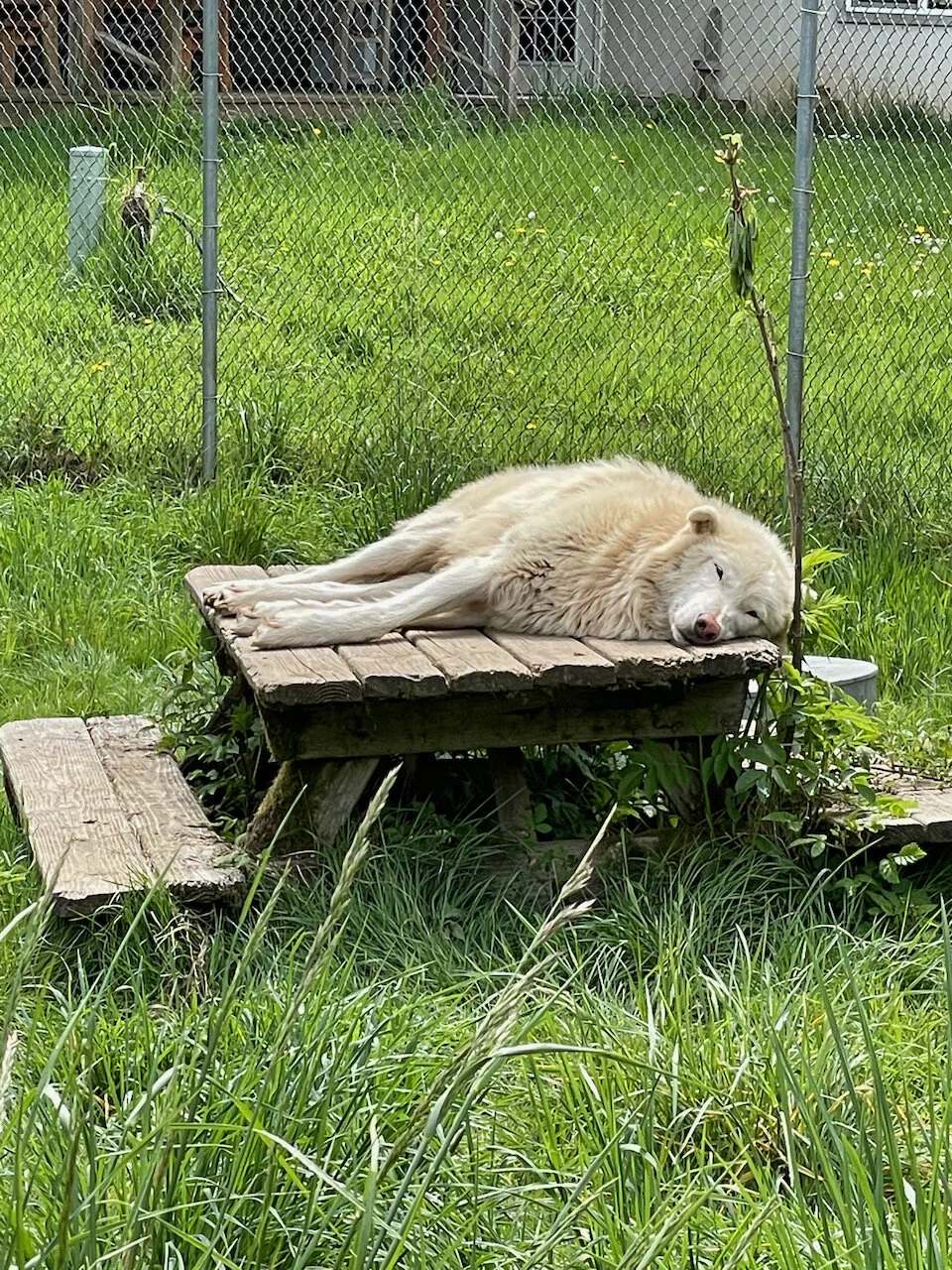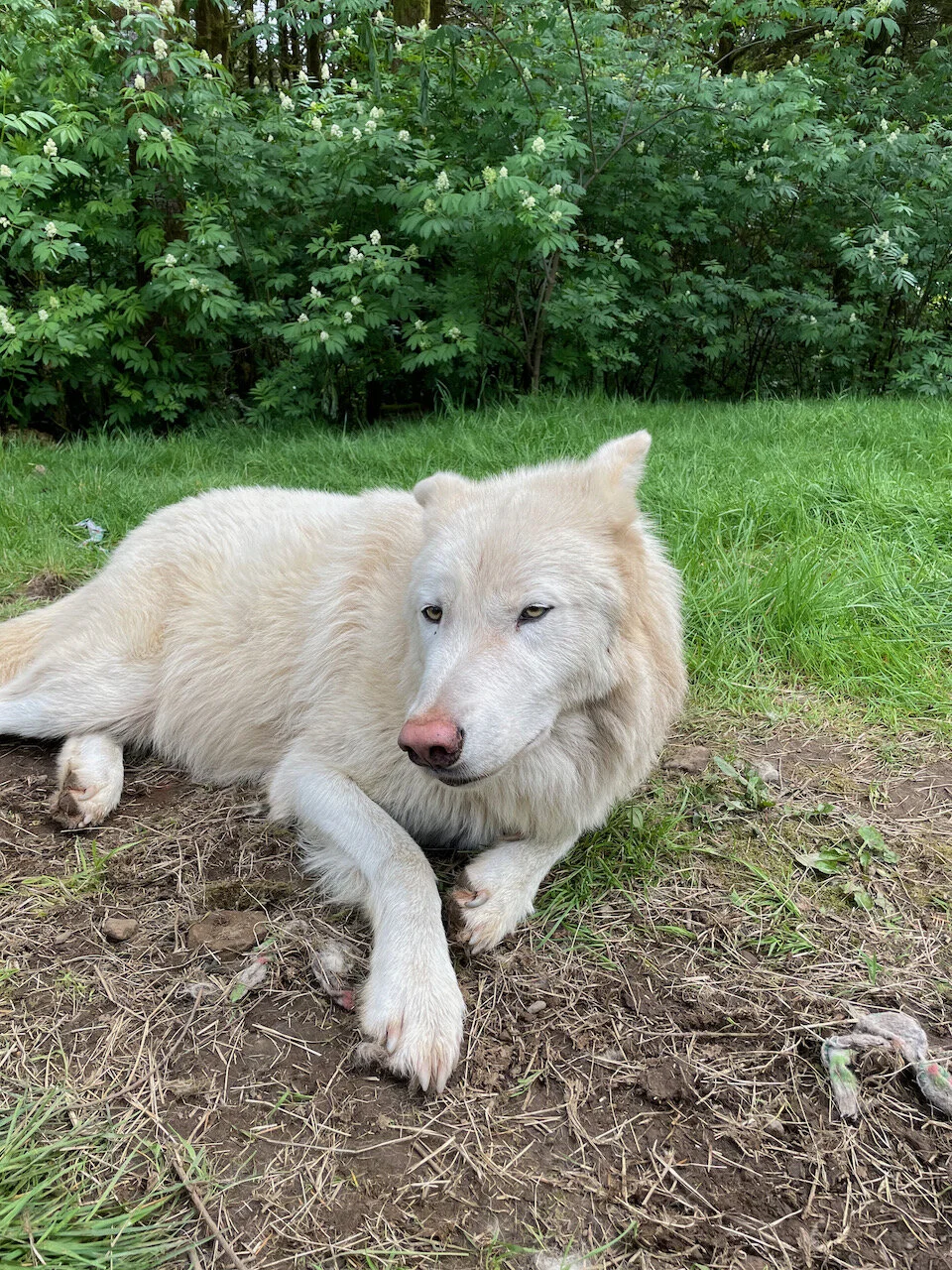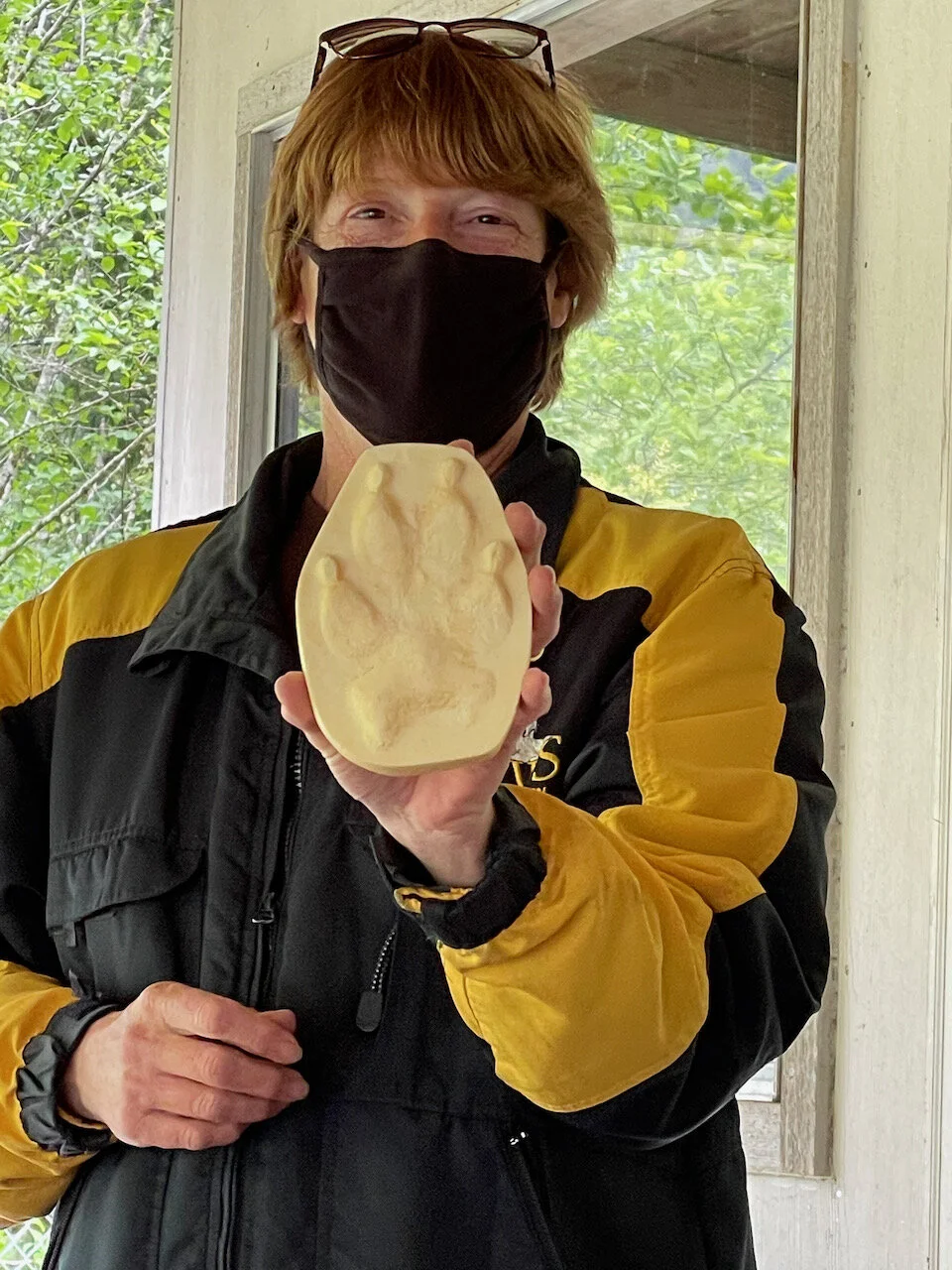Howl you spend your weekend?
Pack up and head to the White Wolf Sanctuary






Many crows make a murder. But when ravens gang up? It’s an unkindness. This might originate from the outdated belief that they have a tendency to kick their chicks out of the nest early, but regardless, it’s not the most flattering of collective nouns. Wolves, another member of the bad rap club, didn’t get the memo.
“Ravens are sometimes called ‘wolf birds,’” said Nichola Chudzik, the lead tour guide at the White Wolf Sanctuary in Tidewater. “They have a symbiotic relationship that has been observed and revered by many cultures.”
Though both species have been feared and disliked more from misunderstanding than anything they actually do, wolves have suffered from especially bad press.
“They just are not the ‘big, bad wolves’ like we used to be taught in old fairy tales,” Chudzik said. “Not only do they prefer not to interact with humans if given the choice and have a positive overall impact on the land and other wildlife; they are good caretakers of their own kind.”
When pups are born they are “the size of a soda can,” and the whole pack pitches in to take care of them.
“Until they lose their ‘milk teeth,’ the rest of the pack will even chew and regurgitate meat for them,” Chudzik said. “They do have fights that can even be deadly, but most of the time they work together for the benefit of the whole pack.”
The sanctuary, at which she has volunteered for more than a decade, gives Chudzik an opportunity to defend these apex predators that have proven defenseless against the only species higher on the food chain.
“I love the wolves; they really do mean the world to me,” Chudzik said. “But being able to educate people on the importance of them and how they’ve been persecuted for so long is my true passion. They need people to be their voice, especially since they became delisted from the protection of the Endangered Species Act.”
Gray wolves in the contiguous 48 states were delisted in January, and applications to hunt and kill them began almost immediately.
In the largest threat to lower-state packs since the delisting, the governor of Idaho signed a bill in early May that will allow the culling of 90 percent of the state's resident wolves, putting more than 1,000 animals in the crosshairs. Critics say this also represents the wasting of considerable taxpayer funds that helped build wolves’ numbers in the past decade.
“Wolves are a keystone predator,” Chudzik said. “That means that they have an impact on everything in the ecosystem. They are at the top of the food chain and they keep that food chain happy. For example, they do hunt elk and other ruminants, but they kill the sick or the weak, so the result is an overall healthier gene pool for the species. Humans, of the other hand, want that big healthy animal with the big rack, so they actually will weaken the gene pools.”
The other positive effect of wolves on an ecosystem is on riparian zones.
“If wolves are in an area, the elk and other ruminants keep moving,” Chudzik said, “they don’t stay and graze for long periods in one spot. Some of their favorite foods are trees like willows and aspens that live along waterways so, without the presence of wolves, they will actually degrade the river banks.”
Yellowstone Park turned out to be a perfect laboratory to test this theory. In 2020, the park marked the 25th anniversary of the reintroduction of wolves after the last were killed or removed in 1927.
“Yellowstone finally looks again today like it did in the 1800s,” Chudzik said. “When the wolves were gone, the elk knew it and the damage was extensive.”
Since the return, the park has seen a re-stabilization of its ecosystem and the return or increase in the number of other species like beavers and healthier populations of elk. There was even a return of songbirds.
“Luckily, there are some ranchers now that see the positive overall impact of the wolves,” Chudzik said. “More and more of them are trying to change their practices to live with the wolves by doing things like improving fencing rather than putting out poison or shooting them.”
In Oregon, we have gone from having no wolves for decades to a slow re-introduction as more and more come over the border and decide to stay. At the last count in September 2020, we had roughly 173 in 22 packs. One of the most famous was OR 7, or Journey, who was born in Oregon then went looking for a mate, even making the crossing into California and Nevada before making the understandable decision to return to Oregon, where he mated with “Wandering Wanda.” The pair had five litters of pups before Journey’s tracking collar stopped signaling. He had logged more than 5,000 miles before that happened.
The sanctuary currently houses a handful of white, or Arctic wolves. and one gray.
Arctic wolves are a subspecies of which there are only about 500 still in the wild.
The sanctuary residents are less in captivity than are in protected habitats. Some of their enclosures are roughly two acres and, if they don’t want to be seen, they have plenty of space to hide, to run and even to hunt.
“We don’t really see any hunting activity in the enclosures,” Chudzik said. “But I did see one that caught and then was playing with a vole.”
The lack of hunting as an instinctual drive for these animals is likely due to a steady diet of different types of meats supplemented with some dry food to ensure they are getting all of their dietary requirements met.
In the wild, a typical wolf will live to about five to seven years old. In protected habitats, they can live up to 15.
The enclosures are artfully designed so that different wolves can be put together, or rotated into new areas. Most especially, when the females are in heat, the males are put into time-outs.
“We do conservation, not preservation,” Chudzik said. “That’s why we don’t breed, and why we don’t allow public contact with the animals.”
The wolves at the sanctuary run the gamut from goofily friendly to wild and wary, but the rules apply to all visitors: look but don’t touch.
Even when you are on the tour, you are asked to be respectful of the wolves by not staring directly at them, not getting too close to the fences of the shyer wolves and not taking photos.
But if you are lucky and they start to howl during your visit, you can listen all you want.
Guided tours are by appointment only. The tour begins with an educational presentation about wolves in general and the White Wolf Sanctuary. Guests are then escorted around the sanctuary to learn about each wolf’s history.
Tours are approximately two hours depending on the size of the group, activity of the wolves, and interests of guests and cost $75 for adults and $25 for children 12 and under.
For more information, go to whitewolfsanctuary.com.
